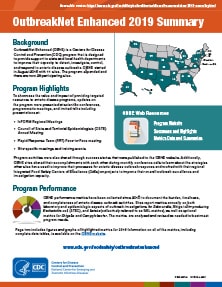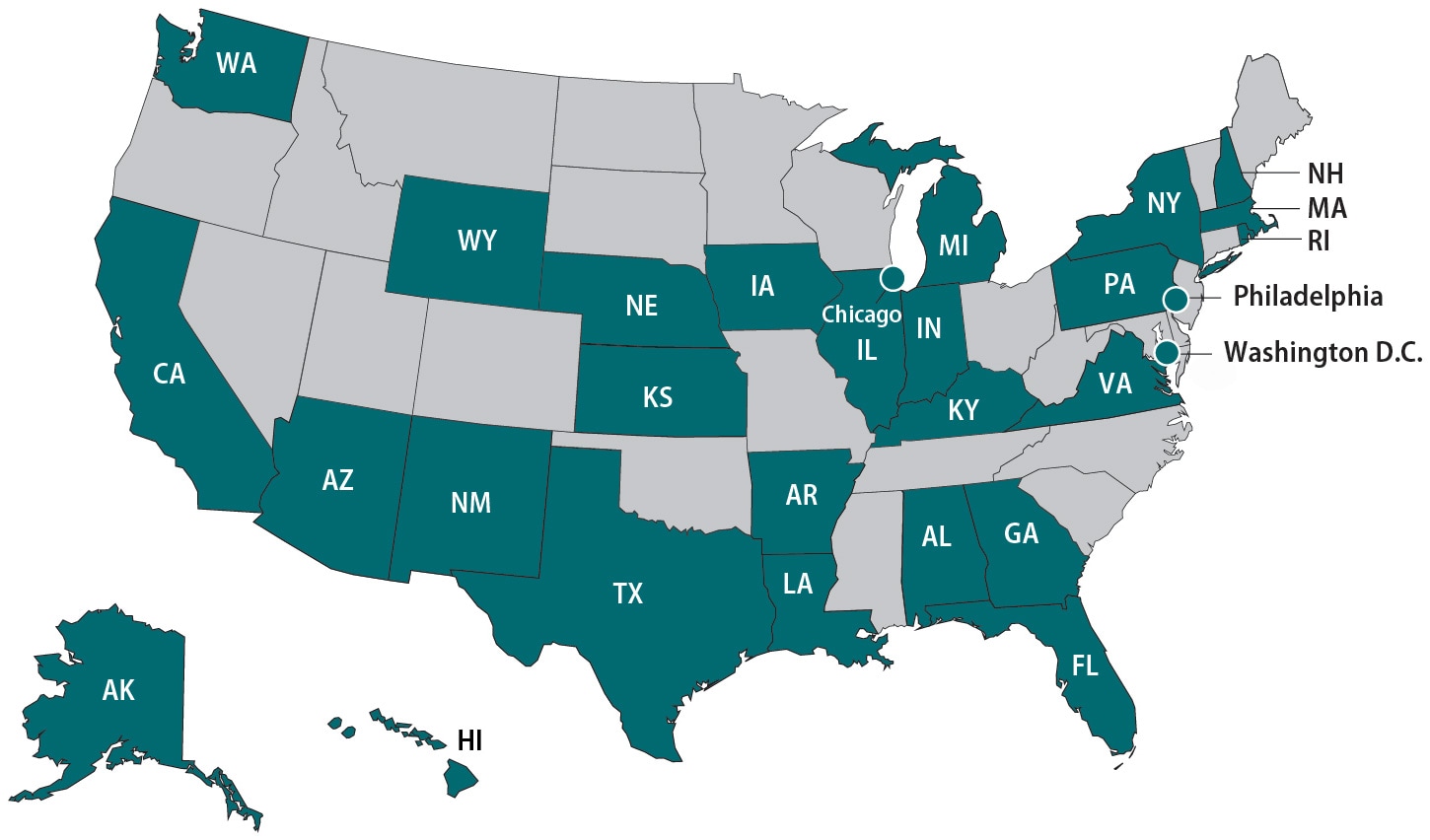OutbreakNet Enhanced 2019 Summary
January 1, 2019 to December 31, 2019
Background
OutbreakNet Enhanced (OBNE) is a Centers for Disease Control and Prevention (CDC) program that is designed to provide support to state and local health departments to improve their capacity to detect, investigate, control, and respond to enteric disease outbreaks. OBNE started in August 2015 with 11 sites. The program expanded and there are now 29 participating sites.
Program Highlights
To showcase the value and impact of providing targeted resources to enteric disease programs, updates on the program were presented at scientific conferences, programmatic meetings, and invited talks including presentations at:
- InFORM Regional Meetings
- Council of State and Territorial Epidemiologists (CSTE) Annual Meeting
- Rapid Response Team (RRT) Face-to-Face meeting
- Site-specific meetings and training events
Program activities were also shared through success stories that were published to the OBNE website. Additionally, OBNE sites shared their accomplishments with each other during monthly conference calls to learn about the strategies other sites have used to improve their processes for enteric disease outbreak response and worked with their regional Integrated Food Safety Centers of Excellence (CoEs) on projects to improve their overall outbreak surveillance and investigation capacity.
Program Performance
OBNE performance metrics have been collected since 2016 to document the burden, timeliness, and completeness of enteric disease outbreak activities. Sites report metrics annually on both laboratory and epidemiologic aspects of outbreak investigations for Salmonella, Shiga toxin-producing Escherichia coli (STEC), and Listeria (collectively referred to as SSL metrics), as well as optional metrics for Shigella and Campylobacter. The metrics are analyzed and revised as needed to best meet program needs.
Page two includes figures and graphs of highlighted metrics for 2019 Information on all of the metrics, including complete data tables, is available on the OBNE website.
Select Metrics for Salmonella, STEC, and Listeria

Nearly
50,000 cases
reported

Over
1,100 clusters
detected

Average of
94% of cases
with attempted interviews
Download and view chart data excel icon[XLS – 42 KB]
From 2016 to 2019, OBNE sites increased the percent of SSL cases with WGS testing
Over the same period, OBNE sites reduced the time from isolate receipt/recovery to SSL sequence upload to federal partners from 20.9 days to 10.5 days.
From 2016 to 2019, OBNE sites decreased the number of days from case report to initial interview attempt
In 2019, OBNE sites conducted routine interviews of cases in 96.6% of cluster and outbreak investigations.
OBNE sites continue to improve the timeliness and completeness of enteric disease outbreak surveillance and response activities. They will continue to strengthen their outbreak response programs to conduct faster, better, and more complete investigations, to help limit the spread of foodborne diseases. Download a print version of the OutbreakNet Enhanced 2019 Summary pdf icon[PDF – 418 KB].

Download a print version of the OutbreakNet Enhanced 2019 Summary pdf icon[PDF - 2 pages].
